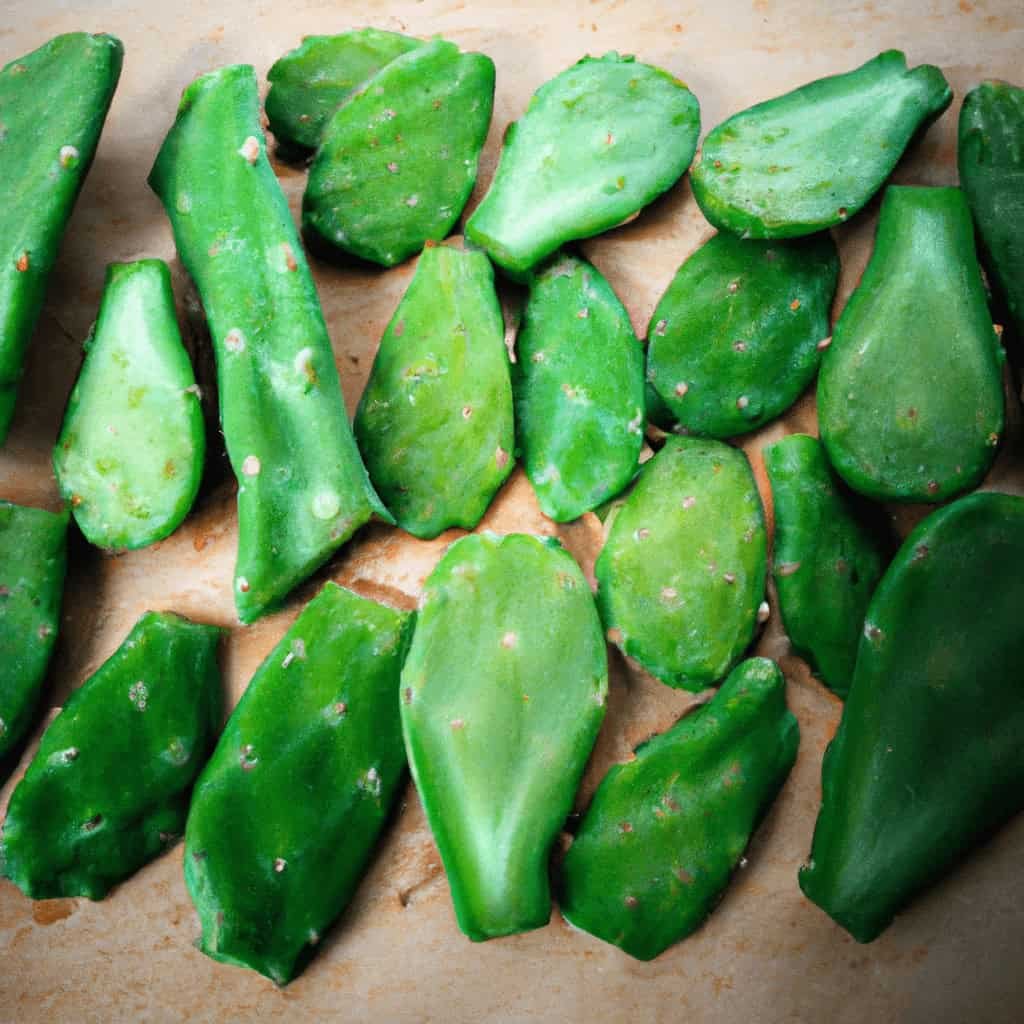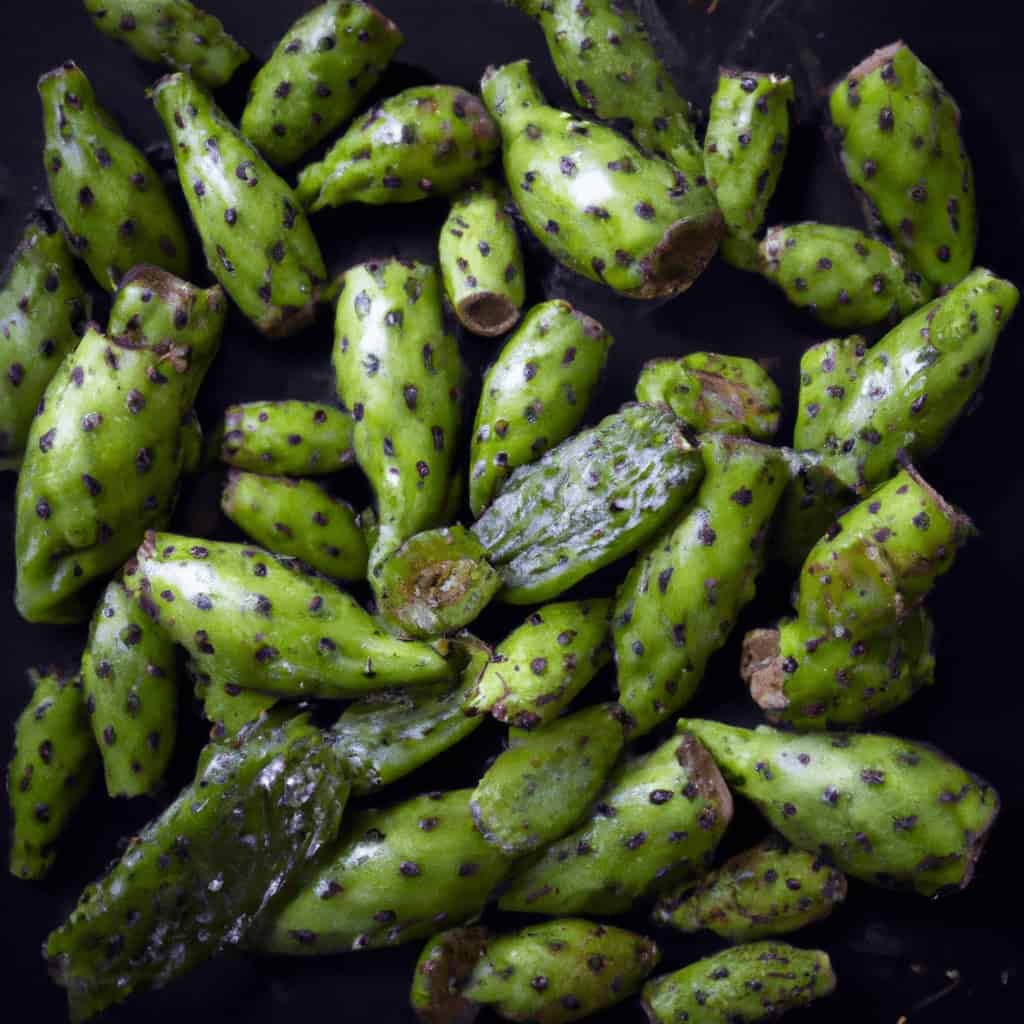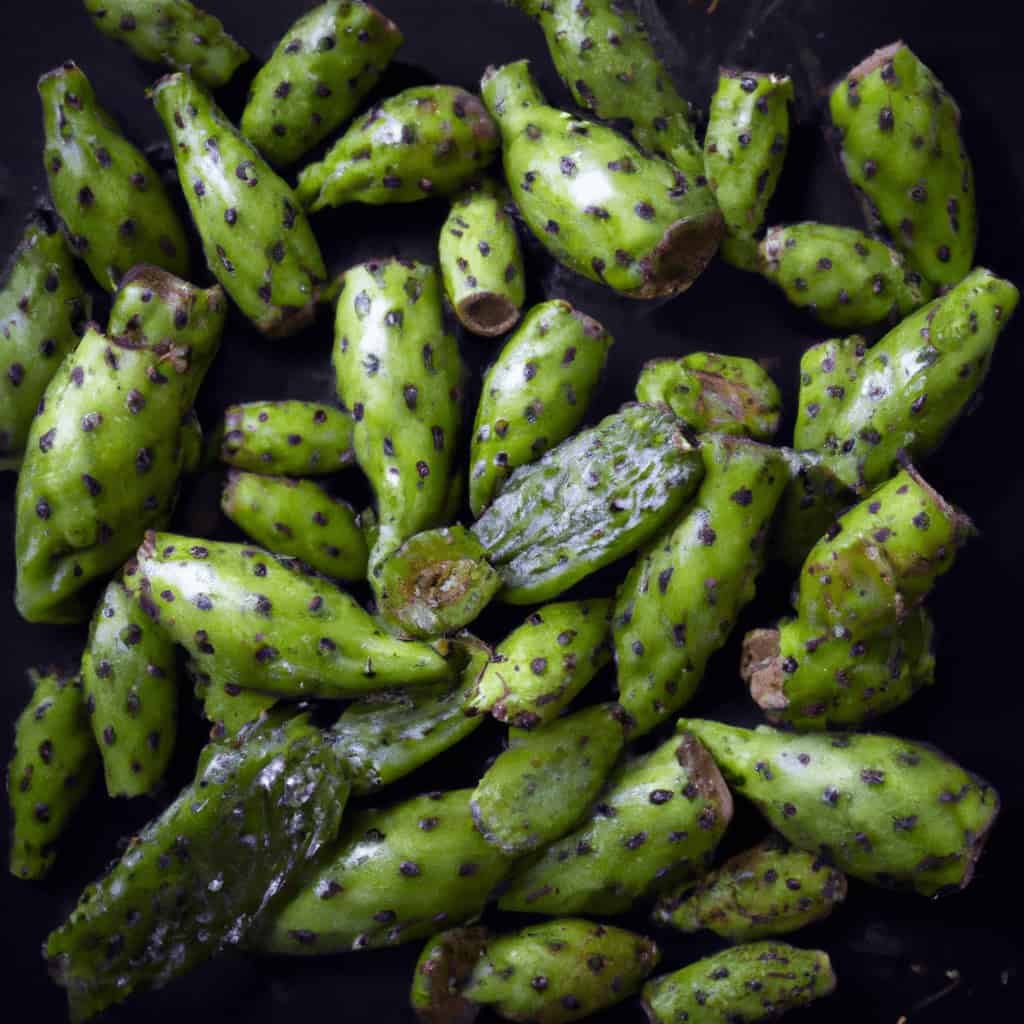Imagine adding a unique twist to your favorite recipes by using a versatile and natural thickening agent: nopal. Yes, that’s right! You may have heard of the numerous health benefits of nopal, but did you know that it can also work wonders in the kitchen? From soups to sauces, nopal has a remarkable ability to enhance the texture and consistency of your dishes. So, if you’re looking to elevate your culinary creations while embracing a more wholesome approach, say hello to nopal as your new secret ingredient!
What is nopal?
Nopal, also known as prickly pear cactus, is a type of cactus plant that is native to the desert regions of North America. It is a common ingredient in Mexican cuisine and has been used for centuries due to its unique properties and nutritional benefits.
Definition
Nopal refers to the flat, oval-shaped pads of the prickly pear cactus. These pads are rich in dietary fiber and contain various vitamins and minerals, making them a popular ingredient in both traditional and modern culinary practices.
Nutritional value
Nopal is a fantastic source of nutrients and provides numerous health benefits. It is low in calories and fat while being high in fiber, antioxidants, and vitamins, including vitamin C, vitamin A, and vitamin K. Additionally, it contains minerals such as calcium, magnesium, and potassium.
Common uses
Nopal is used in various culinary preparations, including salads, omelettes, salsas, and beverages. It is cooked and consumed as a vegetable and is also used to make jelly, candies, and other desserts. Its unique texture and nutritional profile make it a versatile ingredient in both sweet and savory dishes.
Thickening agents in recipes
Importance of thickening agents
Thickening agents play a crucial role in recipes by enhancing texture, improving mouthfeel, and delivering a pleasant consistency to dishes. They are commonly used in sauces, soups, stews, and gravies to add body and thickness.
Commonly used thickening agents in recipes
Some of the most commonly used thickening agents in recipes include flour, cornstarch, tapioca starch, and arrowroot powder. These ingredients are known for their ability to absorb liquid and create a thicker consistency when heated.

Properties of nopal as a thickening agent
Gel-forming capabilities
One of the remarkable properties of nopal is its ability to form a gel-like substance when cooked. This gel-like consistency helps thicken sauces and soups, giving them a smooth and rich texture.
Viscosity
Nopal possesses high viscosity, which means it can create a thick and sticky texture when incorporated into recipes. Its thickening properties make it a suitable choice for recipes that require a substantial texture.
Texture enhancement
In addition to its thickening capabilities, nopal also enhances the overall texture of dishes. It adds a silky and luxurious mouthfeel, making recipes more enjoyable to eat.
Benefits of using nopal as a thickening agent
Health benefits
Using nopal as a thickening agent in recipes brings various health benefits. As mentioned earlier, nopal is loaded with fiber, vitamins, and minerals, promoting digestive health, boosting the immune system, and providing essential nutrients to the body.
Allergen-free alternative
For individuals with dietary restrictions or allergies, nopal serves as an excellent alternative to common thickening agents like flour or cornstarch. It is gluten-free and does not contain any major allergens, making it suitable for those with specific dietary needs.
Eco-friendly option
Nopal is a sustainable and eco-friendly option for thickening recipes. It is a naturally occurring plant that requires minimal resources to grow, reducing its carbon footprint. By incorporating nopal into your cooking, you can contribute to a greener and more environmentally friendly lifestyle.

Considerations for using nopal as a thickening agent
Taste and flavor
While nopal offers numerous benefits as a thickening agent, it is important to consider its taste and flavor. Nopal has a slightly sour taste, which can impact the overall flavor profile of a dish. It is essential to balance the sourness with other ingredients to ensure a harmonious taste.
Proper usage in recipes
Using nopal as a thickening agent requires careful attention to the cooking process. Overheating nopal can result in a slimy texture, so it is necessary to follow proper cooking techniques to avoid any unpleasant outcomes. Furthermore, it is important to add nopal gradually to recipes, allowing it to thicken gradually without becoming overwhelming.
Compatibility with different dishes
While nopal can be used as a thickening agent in a wide range of recipes, it may not be suitable for every dish. Its unique flavor and texture make it more suitable for certain cuisines, such as Mexican or Southwestern dishes. Consider the flavor profile and cooking style of your desired recipe before incorporating nopal as a thickener.
Recipes using nopal as a thickening agent
Nopal-based soups
One delicious way to use nopal as a thickening agent is by incorporating it into soups. Nopal can add a delightful texture and enhance the overall flavor of soups. You can try adding cooked and chopped nopal pads to chicken tortilla soup, vegetable soup, or even a hearty chili.
Nopal-infused sauces
Nopal can also be used to add thickness and flavor to sauces. By blending cooked nopal pads with other ingredients such as tomatoes, onions, and garlic, you can create a flavorful sauce with a rich and velvety texture. This sauce can be used as a topping for tacos, enchiladas, or grilled meats.
Nopal jellies and desserts
For those with a sweet tooth, nopal can be used to create unique jellies and desserts. Its gel-forming capabilities make it an excellent alternative to traditional gelatin. By simmering nopal juice with sugar and other flavorings, you can create refreshing and nutritious jellies. Additionally, nopal can be incorporated into desserts like puddings and custards for added texture and nutritional benefits.

Tips for incorporating nopal into recipes
Choosing the right type of nopal
When using nopal as a thickening agent, it is important to select the right type of nopal pads. Look for young and tender pads, as they are more suitable for cooking and have a milder flavor. Additionally, make sure to remove the spines and rinse the pads thoroughly before cooking.
Preparation methods
To incorporate nopal into recipes, start by removing the thorns and outer skin of the pads. Rinse them under running water to remove any remaining spines or debris. Then, you can chop or slice the pads according to the desired recipe.
Adjusting cooking times and temperatures
When cooking with nopal, it is important to adjust the cooking times and temperatures to achieve optimal results. Overcooking can result in a slimy texture, so it is recommended to cook nopal until it becomes tender but still retains some firmness. Experiment with different cooking techniques and times to find what works best for your recipes.
Alternatives to nopal as a thickening agent
Cornstarch
Cornstarch is a common alternative to nopal as a thickening agent. It is flavorless and creates a smooth texture in recipes. However, it is not as nutritious as nopal and does not offer the same health benefits.
Arrowroot powder
Arrowroot powder is another gluten-free thickening agent. It creates a clear and glossy texture in recipes and works well in both sweet and savory dishes. However, it may be more challenging to find compared to nopal or cornstarch.
Xanthan gum
Xanthan gum is a natural thickener that works well in various recipes. It is often used in gluten-free baking and can provide a similar thickening effect as nopal. However, it is important to use xanthan gum sparingly, as it can create a slimy texture if overused.

Frequently asked questions
Can nopal alter the color of the dish?
Nopal itself does not usually alter the color of a dish significantly. However, if combined with other ingredients such as tomatoes, it may contribute to a slightly reddish or orange hue.
Does nopal have any side effects?
Nopal is generally safe for consumption. However, some individuals may experience digestive discomfort or an allergic reaction. As with any new ingredient, it is recommended to start with small amounts and observe your body’s response. If you have any concerns, consult with a healthcare professional before incorporating nopal into your diet.
Can nopal be used by people with dietary restrictions?
Nopal is a versatile ingredient that can be enjoyed by individuals with various dietary restrictions. It is gluten-free, vegan, and does not contain any major allergens. However, it is always important to check for potential cross-contamination or specific sensitivities to ensure it fits within your dietary requirements.
Conclusion
Nopal, with its gel-forming capabilities, viscosity, and texture enhancement properties, can indeed be used as a thickening agent in recipes. As a nutritious and eco-friendly option, nopal offers health benefits and serves as an allergen-free alternative for those with dietary restrictions. While considering taste and proper usage in recipes, nopal can be incorporated into various dishes, including soups, sauces, and desserts. By following the tips for incorporating nopal and exploring alternative thickening agents, you can enjoy the benefits and unique qualities of nopal in your culinary creations.


